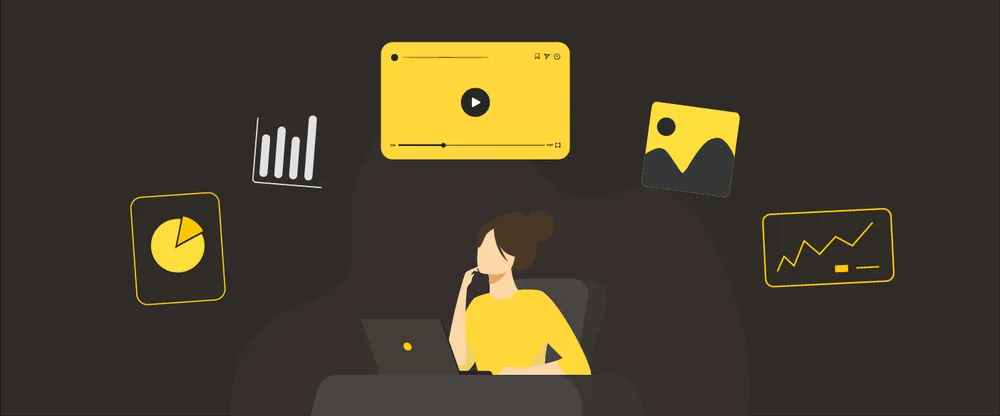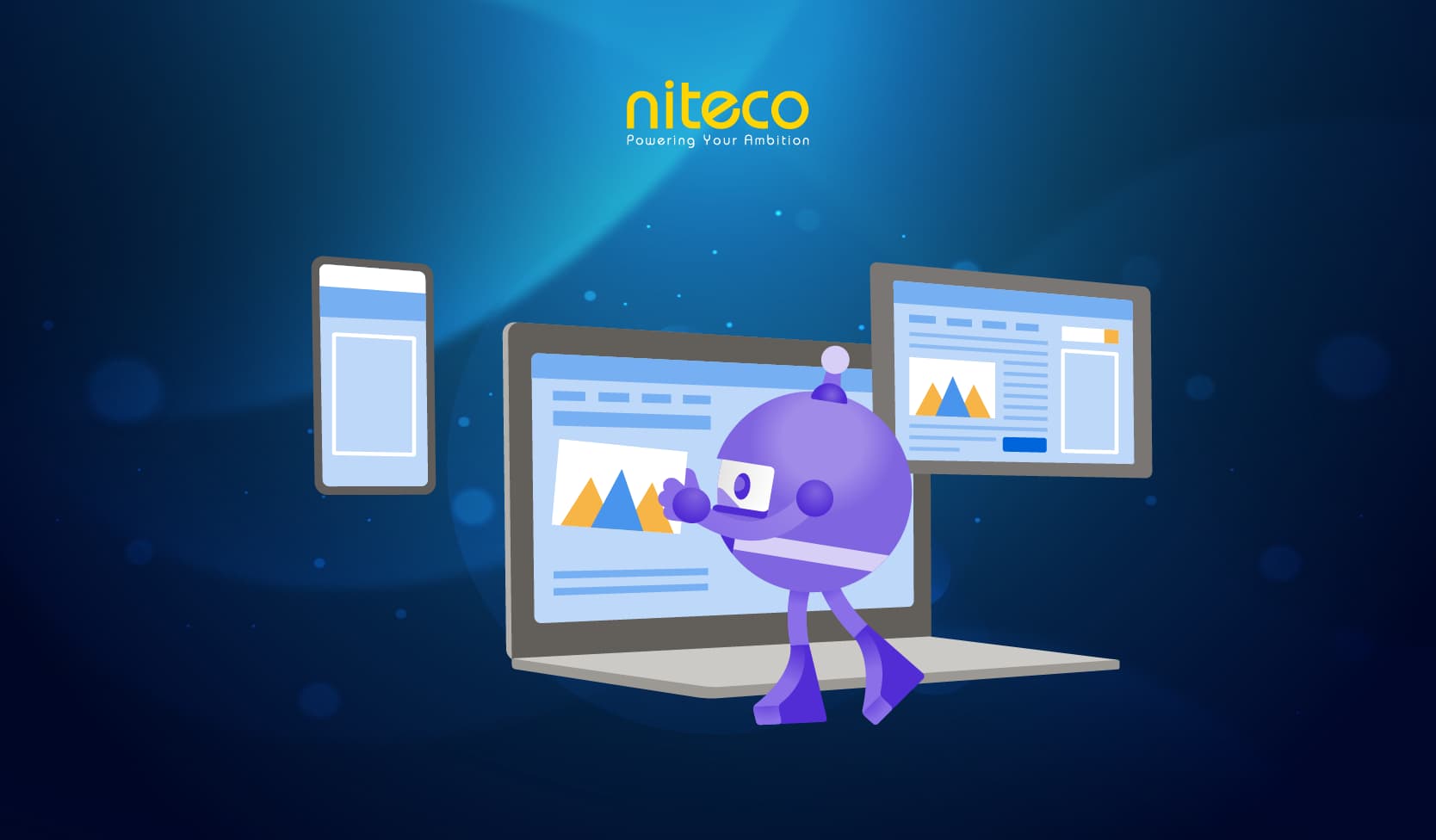It is often said that you shouldn’t put all of your eggs in one basket. What if we told you this applies to content marketing as well? Though blogs have been around for almost 3 decades, with the unprecedented development of the digital landscape, more and more mediums have emerged.
That being said, diversifying your content is not only an opportunity in and of itself but also a safe bet for your business in case any individual source of leads dries up.
Besides, creating content using different mediums is great for your audience, due to their preferred styles of learning. Do you remember when you were in school and your history teachers used books as their only tools of teaching? Did you ever wish they’d show you a video or engage your class in a historical play? That’s exactly what we’re talking about. If you succeed at diversifying your content with different formats, chances are you will be able to attract a larger audience.
People have different preferred styles of learning – some prefer visuals, some are more auditory, others prefer to read and write or prefer learning by actively doing. And some are just a combination of these.
In this article, we’re going to look into how you can diversify your content based on different learning preferences, and how that will not only engage a wider audience but also benefit your business.
1. The power of visuals

Humans are visual creatures. A whopping 65% of us are visual learners and process information based on what we see.
When it comes to communication, visuals transmit messages faster than written and verbal methods. Studies have shown that the brain can process images and videos 60,000 times faster than text, and our eyes can register 36,000 visual messages per hour.
What’s more, imagery tends to stick in the long-term memory, improve comprehension, and trigger emotions. This no doubt explains the incessant rise of bite-sized videos in our fast-paced digital culture.
That being the case, if you feel the urge to do something new for your business, it’s a great time to repurpose some of your existing content into the visual format. For example, if you already have a few blogs published, you can make use of them and transform them into videos. While content creators spend a lot of time writing their blog posts, they often forget about them once they’re published, leaving them lying dormant on their sites. So if you’re thinking about repurposing your blogs, either start by diving deeper into existing points or providing a new perspective to the piece you’ve already written.
If you are not entirely convinced, let’s look at some of YouTube’s statistics, just to emphasize what an impact videos have on all of us.
- More than 2 billion users log in to YouTube every month
- It is the world’s second most visited website (right after Google – its parent company)
- People watch more than a billion hours of video on YouTube every day.
Making your content strategy focus more on visuals not only creates a great opportunity to connect with your audience, but can also make the creation process more fun and entertaining. And if you don’t feel like jumping into a video campaign just yet, you can always look into creating other kinds of visual formats, such as infographics based on your most popular blog posts.
2. The power of conversations
In an interview with Forbes, Catherine Burns, Artistic Director of The Moth, referred to the simplicity and authenticity of storytelling via a podcast, saying, “When you put a camera in someone’s face, that can be really intense. But if you’re not so focused on your physical appearance, I think there is a way to sink deeper into your truth. People, more than ever, are looking for an authentic experience and they’re looking for authentic connection.”

What podcasting does differently from an approach like fact-based journalism is that it is more of a conversation, and it allows for the expression of people’s own thoughts on things. The informality of podcasting is what makes people get more comfortable and vulnerable, which builds trust between the speakers as well as their listeners.
One reason is that listening to a podcast is an intimate and personal experience. As people tend to use earplugs to listen to this type of audio format, they are direct witness to the hesitation and emotion of the conversation. In a way, they become part of the conversation, which is to say this is a great medium to establish a connection.
The history of podcasting goes back as far as the 80s, but not until June 2005, when Apple first released their podcast functionality, did podcasting become more accessible. Nowadays, a podcast is a great medium that’s easily consumable for people who are always on the go.
Thanks to the convenience of being able to consume audio content while taking care of different tasks, in 2021, 41% of the US population reported to have listened to a podcast. No wonder more and more creators are investing in audio content.
If you’re wondering how to get started, we recommend you look into what people are listening to in your specific industry and examine your target audience. There are endless possibilities with podcasts – you can tell stories, do interviews with industry leaders or your colleagues, share tips or even share that mixtape you’ve been working on during lockdown.
3. If you’re wondering: The written word is still relevant

Do you sometimes wonder if creating blogs is still worth it in the day of social media? The answer is yes, and it’s more popular than ever. In fact, around 409 million internet users read about 20 billion blog pages monthly, and 77 million new blog comments are generated each month.
The benefits of blogging are plentiful. Aside from helping you and your business earn more exposure, what blogging can do is position you as an expert in a particular subject matter. Plus, you can use your blogs to incorporate SEO practices to optimize content and boost the visibility of your business.
While social media videos and podcasts are a great way to grab attention and convey information, a long-form feature or an e-book can be a great format to write in depth about a subject that you’re passionate about, and demonstrate your expertise to your professional network. This, in turn, can help build trust and loyalty in your audience.
Also, this can be beneficial to a segment of your audience who can consume information best when it’s presented in words. However, what you can also do is to pair images with words for maximum impact, as visuals and words undoubtedly go hand in hand. For example, when a text or a concept becomes technical and hard to understand, it’s a good idea to incorporate a nice and simple image, and help people remember a certain statement made.
But in short, through blogging, you don't only get to create content that is beneficial business wise, but you can also get to learn more about the topic of interest during the writing process itself. So it’s a win-win situation all around!
4. Think about V.A.T. (Visuals, Audio, Text)
Diversifying content based on learning preferences doesn’t mean you have to stick to one medium at a time. You can actually combine all of them and create an interactive experience for your audience. You can mix visual, audio and text components together – just consider this as an experiment!
For example, if you and your team are writing a blog article about the impact of 5G on our lives, you can do an interview with an industry leader in telecommunication that can be published as an audio or podcast format, and hone in on specific points and flesh out subtopics such as the pros and cons of 5G in a 3-minute video. And the best part is, you got to create multimedia resources for your future social posts!
Undoubtedly, this is an opportunity for you and your team to establish your position in a particular topic and a great approach for your business to connect with your ideal prospects.
So, while you’re at it, take some time to think about what your audience’s looking for, what you’re curious about, and look into your marketing endeavors to see what’s working and what isn’t. Don’t be afraid to think outside the box, and most of all, have fun!
If you feel stuck and aren’t sure where to start, we at Niteco can provide you with content creation support as part of our content marketing services. Don’t hesitate to contact us – because just like you, we love discussing new ideas that meet your business requirements!



